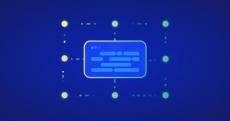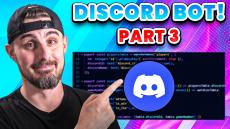|
By Sarah Conway
Gartner predicts that generative AI (GenAI) will become a critical workforce partner for 90% of companies by next year. In application development specifically, we see developers turning to code assistants like Github Copilot and Google Gemini Code Assist to help them build software at an unprecedented speed. But while GenAI can power new levels of productivity and speed, it also introduces new threats and challenges for application security teams.
|
By Mariah Gresham
As we approach the end of the year, many of us are reflecting on what we accomplished in 2024 — what did we do well this year? What could we have done better? It's also the perfect time to reflect on how to improve your team’s security practices. Have you been staying ahead of threats or have you let a few vulnerabilities slip through the cracks?
|
By Stephen Thoemmes
The ultralytics supply chain attack occurred in two distinct phases between December 4-7, 2024. In the first phase, two malicious versions were published to PyPI: version 8.3.41 was released on December 4 at 20:51 UTC and remained available for approximately 12 hours until its removal on December 5 at 09:15 UTC. Version 8.3.42 was published shortly after on December 5 at 12:47 UTC and was available for about one hour before removal at 13:47 UTC.
|
By Daniel Berman
Vulnerability identification is a key part of application security (AppSec). This process entails tracking and reporting the number of vulnerabilities found and fixed to give stakeholders clear insight into the organization’s security posture. However, identifying and monitoring vulnerabilities using traditional methods can make risk evaluation more difficult.
|
By Liran Tal
Securing HTTP requests is crucial when developing Go applications to prevent vulnerabilities like Server-Side Request Forgery (SSRF). SSRF occurs when an attacker manipulates a server to make unintended requests, potentially accessing internal services or sensitive data. We will explore how to secure HTTP requests by employing URL parsing and validation techniques, and provide example code to fortify the http.Get HTTP GET request handler.
|
By Jamie Smith
We’re excited to announce that SBOMs (software bill of materials) generated by Snyk's tools will include license information! This new capability is part of our ongoing efforts in our Software Supply Chain Security solution. The developer-first tools in the solution help you gain a better understanding of your app’s supply chain, identify potential risks, and take the necessary steps to get ahead of them.
|
By Jamie Smith
Trust is the foundation of the open source community — but what happens when that trust is betrayed? When a backdoor vulnerability was found in a widespread Linux-based data compression tool, it nearly created an opportunity for malicious actors to seize control of countless computers worldwide. The vulnerability was introduced by a trusted contributor who, after years of building rapport with maintainers, ultimately exploited that trust.
|
By Daniel Berman
The old adage “knowledge is power” holds especially true in the realm of AppSec. By remaining aware of the potential threats to applications and closing gaps in coverage, AppSec teams can demonstrate to leaders that they are in a solid position to protect vital assets. However, visibility is riddled with challenges, not the least of which are highly productive developers racing to market, often using AI-generated code that contains potential security issues.
|
By Ben Desjardins
As DevOps adoption has grown, organizations are pushing code into production faster than ever. However, the fast pace of DevOps has led many developers to view security as a bottleneck or afterthought, which means security teams need a new approach to keep up.
|
By Daniel Berman
In the software development industry, proactively securing the software development life cycle (SDLC) from cyber threats must always be a top priority. Taking a shift left approach addresses security early on so your development teams can spend more time innovating and less on dealing with vulnerabilities. But that’s just the beginning.
|
By Snyk
This is the third video of our series 'How to Build a Discord Bot'. In this video, we will be focussing on data storage and setting up a database to store our Wordle results in. Stay tuned for the next video where we will be deploying the bot, which will be able to run 24/7! Each video will be published one week from the previous.
|
By Snyk
This is the second video of our series 'How to Build a Discord Bot'. In this video, we will be learning about what Wordle is and how it works as well as building out the logic for the bot and testing it out. Stay tuned for the next video where we start using a database to store the Wordle results! Each video will be published one week from the previous.
|
By Snyk
This book will help both development and application security architects and practitioners address the risk of vulnerable open source libraries and discuss why such vulnerable dependencies are the most likely to be exploited by attackers.
|
By Snyk
Forrester conducted a customer study to get insights into why organizations choose Snyk to help them tackle and implement developer-first security. Read the report to dive into the benefits, cost and value ROI for Snyk.
|
By Snyk
This book reviews how the serverless paradigm affects the security of an application, and dives into the benefits it brings.
|
By Snyk
Snyk's annual State of Open Source Security Report 2020 is here. Download it now to learn how Open Source security is evolving.
|
By Snyk
"Shift left" has become the holy grail for security teams today but organizations are still struggling to successfully implement some of the key processes that shifting security left entails. A new study sponsored by Snyk and conducted by Enterprise Strategy Group (ESG) has found that while developers are indeed being given more responsibility for testing their applications for security issues, they simply don't have the knowledge or right set of tools to do so.
|
By Snyk
81% of security and development professionals believe developers are responsible for open source security - but many organizations are still unsure how to start building a culture and practice of DevSecOps. Puppet & Snyk's study is digging deeper into the trends of DevSecOps adoption.
|
By Snyk
The 2020 Gartner Market Guide for SCA is here! Recent Gartner survey finds that over 90% of organizations leverage OSS in application development - and as a result, security of open source packages was the highest ranked concern for respondents. These concerns have led to a growing market, addressed by various vendors for SCA tools that mitigate the risk of OSS. New trends emerge with devops on the rise - as the market shifts towards developer-friendly SCA tools.
- December 2024 (32)
- November 2024 (19)
- October 2024 (37)
- September 2024 (32)
- August 2024 (34)
- July 2024 (32)
- June 2024 (34)
- May 2024 (35)
- April 2024 (29)
- March 2024 (11)
- February 2024 (14)
- January 2024 (21)
- December 2023 (20)
- November 2023 (31)
- October 2023 (29)
- September 2023 (13)
- August 2023 (25)
- July 2023 (17)
- June 2023 (31)
- May 2023 (23)
- April 2023 (20)
- March 2023 (24)
- February 2023 (21)
- January 2023 (18)
- December 2022 (22)
- November 2022 (33)
- October 2022 (40)
- September 2022 (36)
- August 2022 (36)
- July 2022 (18)
- June 2022 (22)
- May 2022 (25)
- April 2022 (31)
- March 2022 (43)
- February 2022 (30)
- January 2022 (28)
- December 2021 (44)
- November 2021 (27)
- October 2021 (26)
- September 2021 (27)
- August 2021 (20)
- July 2021 (19)
- June 2021 (23)
- May 2021 (29)
- April 2021 (22)
- March 2021 (33)
- February 2021 (12)
- January 2021 (13)
- December 2020 (2)
Snyk is an open source security platform designed to help software-driven businesses enhance developer security. Snyk's dependency scanner makes it the only solution that seamlessly and proactively finds, prioritizes and fixes vulnerabilities and license violations in open source dependencies and container images.
Security Across the Cloud Native Application Stack:
- Open Source Security: Automatically find, prioritize and fix vulnerabilities in your open source dependencies throughout your development process.
- Code Security: Find and fix vulnerabilities in your application code in real-time during the development process.
- Container Security Find and automatically fix vulnerabilities in your containers at every point in the container lifecycle.
- Infrastructure as Code Security Find and fix Kubernetes and Terraform infrastructure as code issues while in development.
Develop Fast. Stay Secure.




























